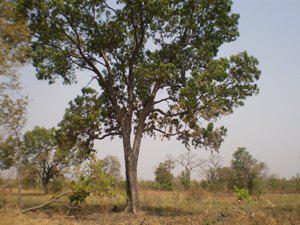Akomian Fortuné Azihou
The project aims to conserve local biodiversity in community forests by identifying and promoting indigenous conservation practices and decision making about resource use.
Gallery forests are habitats of many threatened and multipurpose tree species used by local communities of Benin. Population growth and the banning to exploit trees in the Biosphere Reserve of Pendjari increase the harvesting pressure on gallery forests located in the surrounding villages. The free access to these community forests and the inexistence of decision maker concerning resource use combined with growing demand for plant parts for subsistence use, animal feeding, medicine and commercial trade lead to unsustainable harvesting methods that hinder the regeneration and reduce the density and performance of adult.

Such uncontrolled use have negative impact on populations of Khaya senegalensis, Afzelia Africana, Pterocarpus erinaceus, Vitex doniana and Daniellia oliveri. Therefore, there is an urgent need to aware people on their joint responsibility to promote the sustainable use of shared forests.
The present study aims to assess the socio economical importance of gallery forest trees for local communities, investigate the degree of “natural” regeneration (seedlings, suckers, ground layers, root cuttings, stump sprouts) of focused species based on field observation and raise awareness of local communities on the economic and ecological benefits of vegetative propagation of multipurpose tree species.
To achieve these objectives, information on use, commercialisation and conservation of focused species will be collected through an ethnobotanical survey. Delegates from interviewed households will be organised in working groups to record data on natural regeneration of mother trees in field. Results of ethnobotanical survey and field observation will be analysed and discussed with scientists, conservation practitioners, NGO and local communities during a workshop. Outputs of the workshop will allow us to develop and implement several sensitizations on various propagation methods used by focused species in villages surrounding the reserve.
This work will give an overview of the importance of local actions and the role of household in biodiversity conservation. Field observation will give new ways to learn from nature and build conservation actions on biological process while giving new skills to farmers. Local communities will use their new skills to investigate and take regeneration advantage from germination and vegetative propagation of other useful plant species.